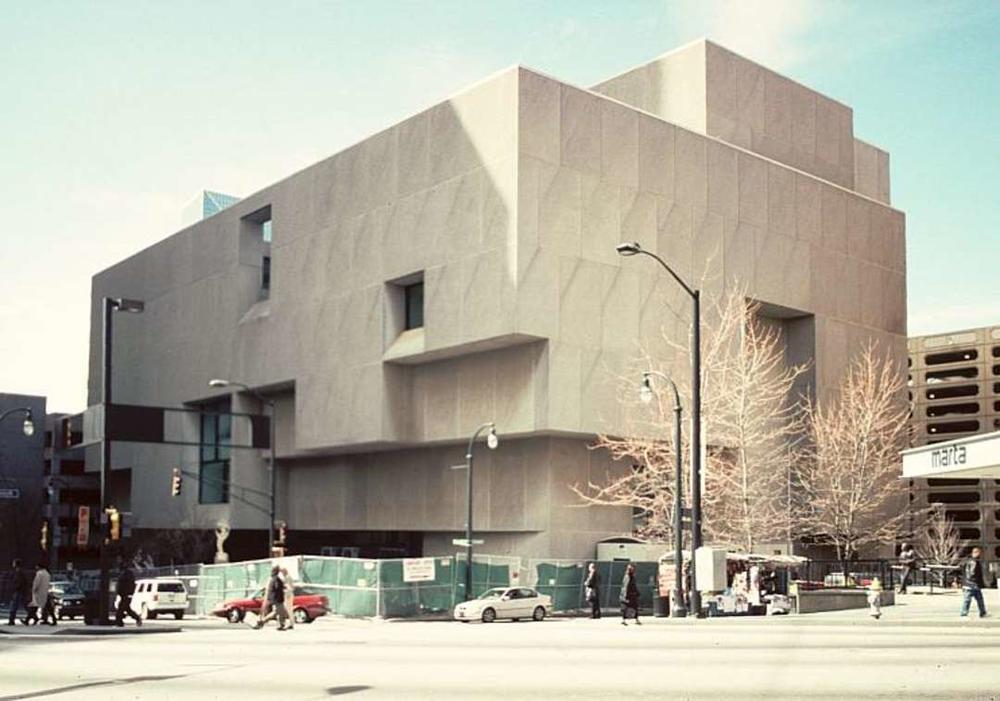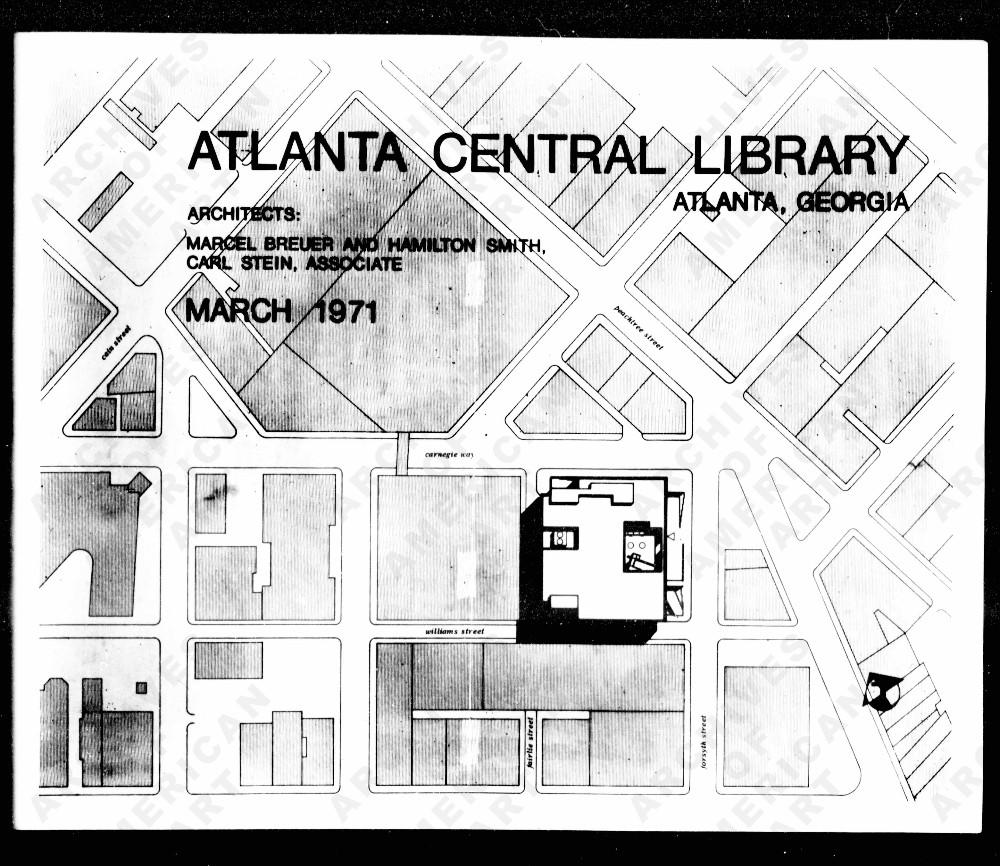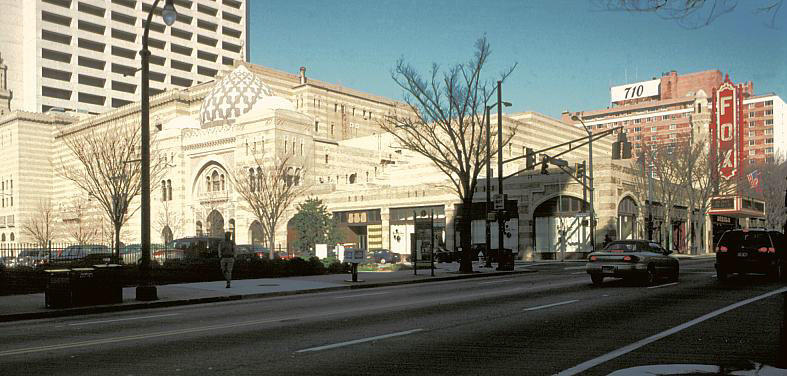Section Branding
Header Content
The Case For Saving Atlanta’s Ugliest Library
Primary Content
Rickey Bevington looks at the most interesting debates about life in the South’s most prominent city. She is the Atlanta host for NPR's nationally syndicated "All Things Considered" weekdays from 4 to 7 p.m on 88.5 FM.
Should Atlanta's Central Library be saved?
That’s the question before the Atlanta City Council and the Fulton County Commission debating the future of downtown’s Central Library.
Dedicated in 1980, it’s the last building designed by internationally-acclaimed architect Marcel Breuer, known for working in the “brutalist” style – part of the Bauhaus school.
The name is a good reflection of what the obtrusive, concrete structure looks like.
To learn about Central Library’s architecture, I visited the building with Manuel Cadrecha of Perkins + Will Architects.
On the unique architectural qualities of the building
Ok, so, if you look around the building, a lot of the exposed materials on the building, which would typically in a building now just be painted sheetrock, are actually handcrafted, poured in place concrete. And then these slots, these are incredible difficult things to pour. And what it is is just, you know, very refined architectural concrete and detailing that you just don't see anymore. There aren't any other buildings like this in Atlanta. These are things that people need to really take time to appreciate. Things like how a building ages it's not so much that buildings age, it's that time passes.
On why the Central Library hasn't aged as well as other kinds of architecture
I don't know, I mean, I think the building just hasn't been kept up that well. The building is in a bad need of cleaning and that's what I was saying earlier. It's not so much that buildings age, it's that time passes. We're living in an age where people are, their attention span is a little short, and it's the trend of the minute.
On the possibility of converting the library into a Ponce City Market-style mixed-use building
So you could imagine a building like this with these, you know, opening up these ceilings, opening up to the skylights, this being a place where you could have markets, you could have creative officing, you could have restaurants and bars and entertainment centers. I mean, this could be a phenomenal place. So if the city can't figure out what to do with this as a library, I can understand that because libraries are a little in flux. Is there a mechanism for selling the building with the stipulation that the building needs to maintained? That it can be altered, it can be repositioned, it can be reworked, but it needs to be maintained. It's the only building we have in Atlanta that goes back to the early modern movement.
On the large windows in the front of the library.
Yeah, I mean, these enormous windows, which are city-scaled windows. They're large sculptural windows that create this fantastic sort of relief on the exterior of the building. They're usually placed either jutting out of the building or punching into the building. If you see, it's where people start gathering. People come close to the windows.
On the library's top-down shape
Typically in traditional architecture that the bottom is the biggest part and it gets smaller as it goes up. Columns are bigger at the bottom and then they have what's called entasis, which means that they get thinner as they go up. This building goes the other way. This building is bigger at the top and steps down to the bottom so that it almost feels like it's levitating or floating above the city.
On Atlanta's trend of tearing down historical buildings
I was at Georgia Tech in the mid ‘70s when they wanted to tear down the Fox, and I was as passionate about saving the Fox as I am about saving the Breuer library. You don't have too many Fox Theatres in Atlanta, so we had to save that. They wanted to tear that down and put a parking lot on it.
On the city's potential as an architecture town
I'm an architect, right? So I think I'm doing some pretty good stuff, but I think that Atlanta is developing as an architectural city. There's really interesting buildings here. John Portman's buildings from the ‘60s, ‘70s, ‘80s are buildings that are known worldwide, the Renzo Piano extension to Richard Meyer's High Museum, those are great buildings. I think that we need to be protective of the great buildings we have and let them serve as examples so we can build on that legacy and do other great buildings.




